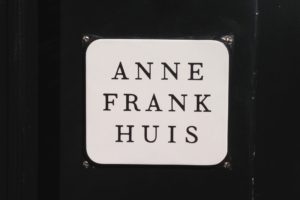
After the Nazi empire lost the Second World War in 1945, Germany was facing another crisis of downfall. However, with the help of the Allied Powers, the German people could finally reconstruct themselves back to normalcy. After being split into four pieces to help reconstruct Germany in 1945, censorship and denazification became the norm, but it did not come without a price. This is the German denazification after World War 2.
—
To some degree, it seemed like Germany was almost trying to overcompensate, but it wasn’t all on Germany, and many of the rule changes banning certain things made perfect sense. There are too many ways they changed after the war, but some of them were more important than others. Considering that Germany was the country that decided to be guilty, the laws finding distaste work well and make sense to save face. Do they make it seem that some of this stuff is worse than murder? Anyway, I am going to be listing the top 10 ways Germany denazified after World War 2.
German Denazification After World War
1. Outlawing The Nazi Salute
We all know about the infamous Nazi salute, but after the Second World War, it was officially banned and deemed criminal if used in public. The salute was banned almost immediately after the end of the war (Extra Link). Now a days, it can be punished by upwards of three years in jail. If it were not for those dang neo-Nazis, we would all be okay. Even in media, including video games, you’ll have a hard time passing anything acceptable in the country of Germany. Even pictures of the Nazi salute or slogans are illegal, be it they are shared on public domain, especially on social media like Facebook.
—
The famous “Heil Hitler” stood for “Hail Hitler,” but it had other variations too. Paying respect to the salute is essentially paying respect to Adolf Hitler and/or fascism, which makes sense, but are they taking it a little too far? Maybe it is too soon, but even if done it jest, it can be taken seriously. Generally speaking though, at least symbols can be used as long as there is a lesson to be learned and the purpose is no worse than satire. (Link 1) The Nazi salute is also banned in several other countries, including Austria, and yes, even tourists can get slapped on the wrist for even mocking the salute.
2. Outlawing Hate Speech
While hate speech sounds fairly status quo, the extent that Germany decided to show it after the affects on others of the World War 2 was a little intense. Hate speech comes in all forms, and some say Germany has taken it too far, but some things like hate speech towards Jews was well justified. Some of the laws created after the advent of normalcy after the war were very strict. Later on, Germany has banned the gathering of neo-Nazis, and they even moved prominent Nazis to unmarked graves to avoid them from becoming pilgrimage sites. The German government has freedom of speech, but they claim they have a duty to maintain social harmony above individual expression.
—
You are allowed to secretly hate, but to hate in public domain is strictly prohibited. Many in Germany think that stigmatization will do nothing but strengthen the cause of people willing to share their negative views. This has led to debates about having a more open discussion with those struggling with hate in their heart. This hate has even been said to reach social media, and the government in Germany has even asked them to delete hateful posts on there. In spite of the walking contradiction most of the people who hate are labeled, the laws don’t do much to help the cause.
German Denazification After World War
3. Outlawing The Swastika
We all know about this symbol and the horror it represented during the horrible days of the Third Reich. Using the symbol representation of the Nazi Party has been banned, and it can even carry and steep penalty. Even recently, the symbol has even been banned from being shown in video games and other entertainment media, including movies. The SS sig runes are also banned from being displayed. Since many of the Nazi symbols are considered unconstitutional, there are some regulatory guidelines that allow them to be presented under certain conditions if reviewed first.
—
However, it seems that it makes sense, it’s just not a law elsewhere deeming it illegal. Can you get in trouble for simply having it in the background of your photo? I’m sure it depends on the situation, but a 45-year-old man was arrested and sentenced to three months in prison after uploading a picture of a man with swastika tattoos. You can own memorabilia and even sell trinkets with Nazi symbols on them as long as no one sees them publicly. If so, you are welcome to cover up the symbol with tape, but you cannot sell replicas or anything past antiques made prior to 1945. The laws continue and can be confusing, but this is a taste of what Germany dictates, even if some of them barely make sense.
4. Outlawing Nazi Power
Yeah, it was outlawed to have segregation of anyone in Germany, but what about those darn Nazis? All of those concentration camps came to a quick close after the Allies seized power over the country. They then separated it into four different occupational zones controlled by 4 separate Allied powers. America, Russia, Britain and France were the ones in charge, and they had a distinct problem. The Allied Control Council based in Berlin was in charge of this shift, but there were still 8.5 million German citizens that were apart of the Nazi party, and many more had taken part in the Nazi regime in one way or another.
—
All of those who had gained power during the Nazi regime were barred from ever holding any position of influence ever again, being automatically arrested. More than 400,000 Germans were held in internment camps without a case by case review. The Nuremberg trials took form in 1946 and took to task the major Nazi war criminals, but the task of Germany returning to normal was a larger task. The Allies then categorized offenders of the Nazi cause into 5 categories, ranging from war criminals to the innocent. The Allies then set up commissions to vet individuals on their involvement with the regime. Many of the Germans in high command were executed during the Nuremberg trials.
German Denazification After World War
5. Outlawing National Socialism
Any intent for the government to go back to a national socialist party have been quashed by current law in Germany. The idea of Germany going full on fascist again seems unlikely, but regardless, the idea of it was stomped out entirely to avoid further issues of an uprising. While you can only keep a grip on so many things, Germany has done well by it’s rules to keep it out of public domain. The Nazi Party was considered a criminal organization, and the Nuremberg Tribunal in 1946 sealed this deal and later on by Germany’s highest court.
6. Outlawing Nazi Science
Right after the Second World War had ended, German industry had shut down by the Allies, but the United States had something else in mind. The American and British forces scoured as much of the research the Germans were making, seizing all of the research facilities and interrogating scientists. They would also find classified war-related documents and materials in the search.
—
This eventually turned into what was known as Operation Paperclip, starting in 1945, where many German scientists were brought to America for employment. Many of them were brought to companies like NASA. Roughly 1,600 Nazi scientists were brought to America to help fight during the Cold War. One of the biggest names to come from this program was Wernher von Braun, an aerospace engineer who developed the V-2 rocket. This operation would eventually lead NASA to landing astronauts on the mood.
German Denazification After World War
7. Outlawing Mein Kampf
The infamous book that Hitler wrote as a manifesto while in prison after his attempted coup has only been stuck in the heads of millions of people. It was published in 1925, and it explains not only his antisemitism, but his future plans for Germany. The book was, from 1945 until 2015, held by Bavaria, having had controlled the rights. In it’s control, Bavaria held on to the rights and held the ban of the book from 1945 until present day. Since the first volume was released in 1925, a lapse of it’s copyright created a loophole allowing the book to be sold in Germany beginning in 2016. The books forbidden nature has also surrounded the Mein Kampf with a morbid curiosity.
—
Educators and scholars were exempted for the time of it’s ban, but it was not something that could be sold otherwise. Many from the Jewish community think that this is a bad move and should be reversed. Back in 2012, it was revealed that the Bavarian government donated funds to the project preparing the new annotated edition. Claims against it were that it would cause distress to survivors of the Holocaust, and Bavaria later withdrew their funding. The book even sold over 12 million copies before the end of World War 2, often given to newlywed couples of the Nazi state.
8. Outlawing Holocaust Denial
To deny the Holocaust is simply to deny reality. Nearly 6 million European Jews were led to the slaughter because of a madman on a power trip. Holocaust denial is not only in Germany, but it’s an idea that around the world has it’s grips. It’s not only Germany that’s passed laws against Holocaust denial, it’s other European countries as well. Laws include gross trivialization of crimes, especially and including the Holocaust. This does not limit it to the Holocaust, but the genocide of the Jewish people in Europe made this happen.
—
This denial was also considered an insult to personal honor, and it was outlawed as such. In 1985, it was deemed worthy of a fine or up to one year in prison. Later on in 1994, the legal limit for prison time was increase up to 5 years after become an incitement crime. Many of the laws were seen as going to far, even though a man in 2006 was sent to trial displaying Nazi symbols campaigning against far-right extremism.
German Denazification After World War
9. Ending Concentration Camps
The idea of antisemitism is scary to many people, and it still has it reaches to this day. It did not necessarily start in Nazi Germany, but it certainly made it’s largest mark there. As mentioned above, Holocaust denial is considered an insult, and this may have been punishable under certain circumstances, especially today. However, isn’t this one obvious?
—
After the war, the concentration camps that housed so much suffering were liberated. The liberation of concentration camps began to occur in 1944, and slowly, they all were set free by the Summer of 1945. The soviets were involved in most of the liberation, and the things they saw were abhorrent. Prisoners were stripped to the bone, starving and struggling with disease. Having seized the concentration camps from the Nazis, the world was one less nasty thing away from normalcy.
10. Ending Nazi Destruction
In spite of the Cold War and blaspheme laws of postwar Germany, the Marshall Plan did help the Nazi rebuild the destruction the Nazi had pretty much done to themselves. Rebuilding the cities, economy, industry and infrastructure of Germany took a lot of work, but the 15 billion sent by went to 16 other countries of Western Europe as well. The plan was enacted by then United States Secretary of State George C. Marshall in 1948. It allowed the free and open commerce between the US and Europe, as well as trade amongst themselves. It fostered Western Europe from Communism, which had already been spreading — the “Iron Curtain” — as the Soviets were fighting their front in World War 2, especially by 1948.
—
All of the things the Nazi had essentially been asking for were given or changed, along with the creation of NATO in 1949. It’s not to say that the European countries were not helping themselves, considering the help given by the United States was modest at best, but it was appreciated. The plan only accounted for 3 percent of the national income of the countries, but it did raise the economy to national levels higher than that of before the war. Front businesses were designed to further US interest in this region of Europe as well. The only country free of destruction was the United States, and Europe was on the brink of famine, considering the fact that food distribution had been disrupted by fighting. Even invitations were sent to the Soviets and their satellite states, but the Soviets refused out of fear of interference.





Recent Comments